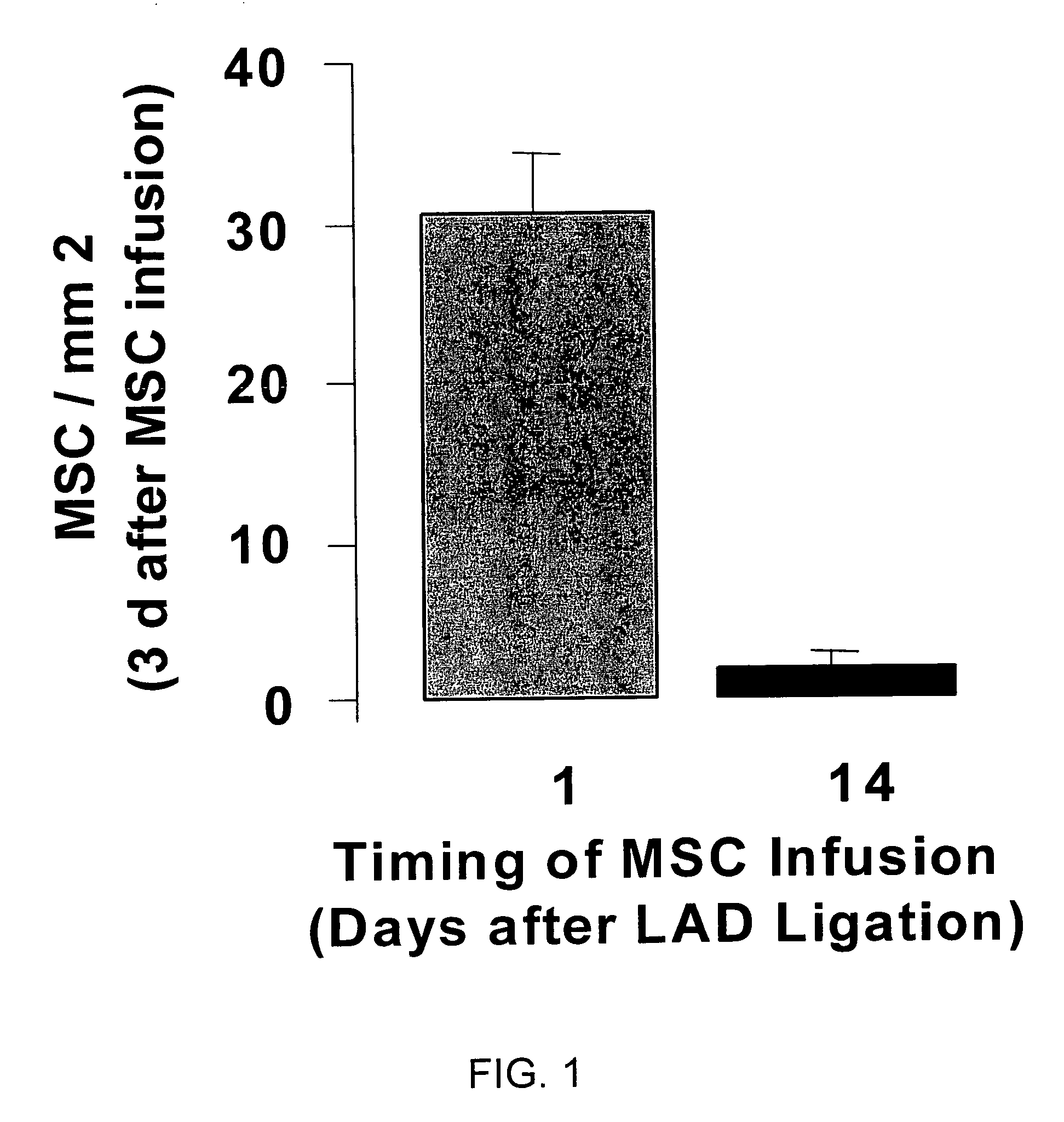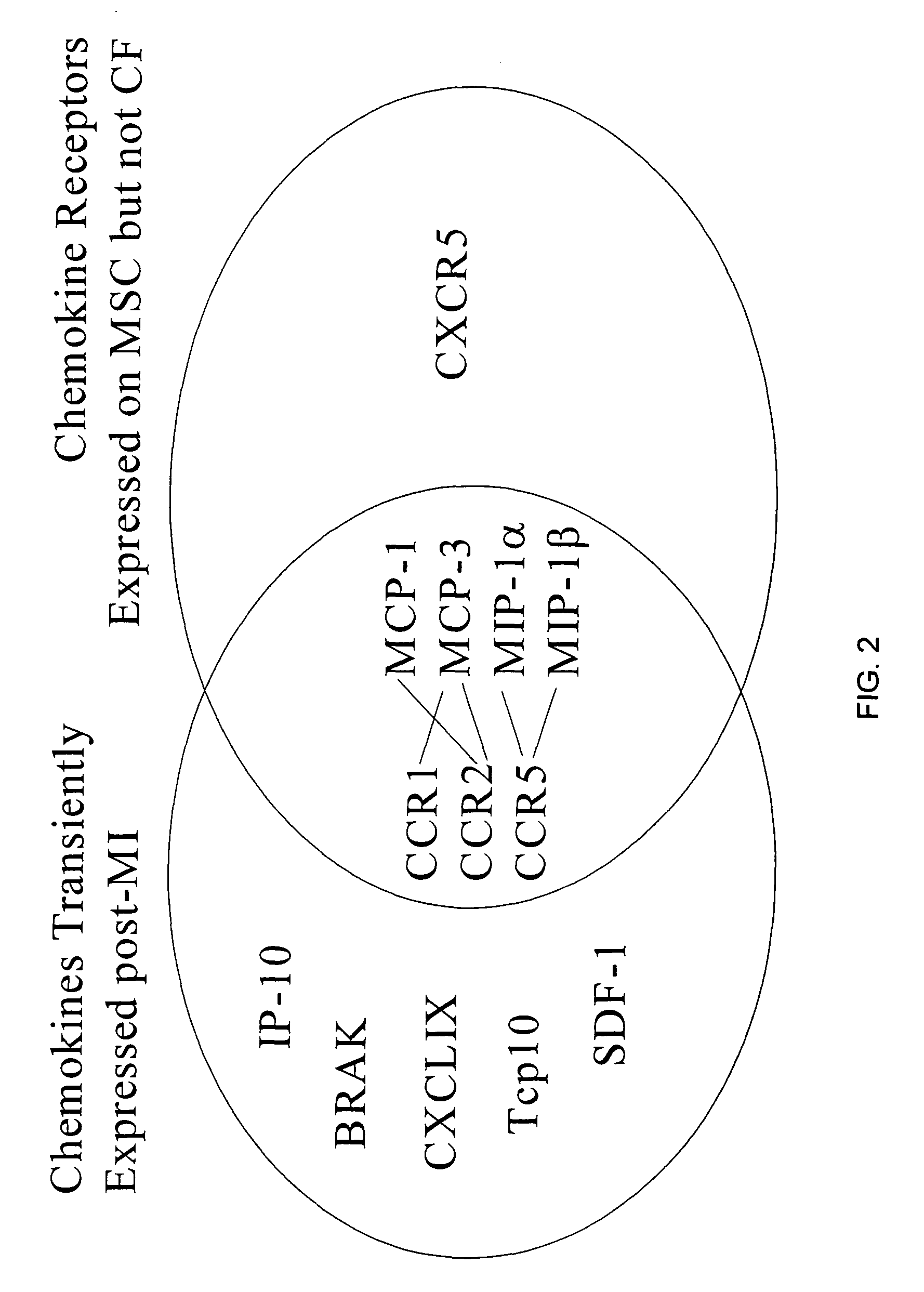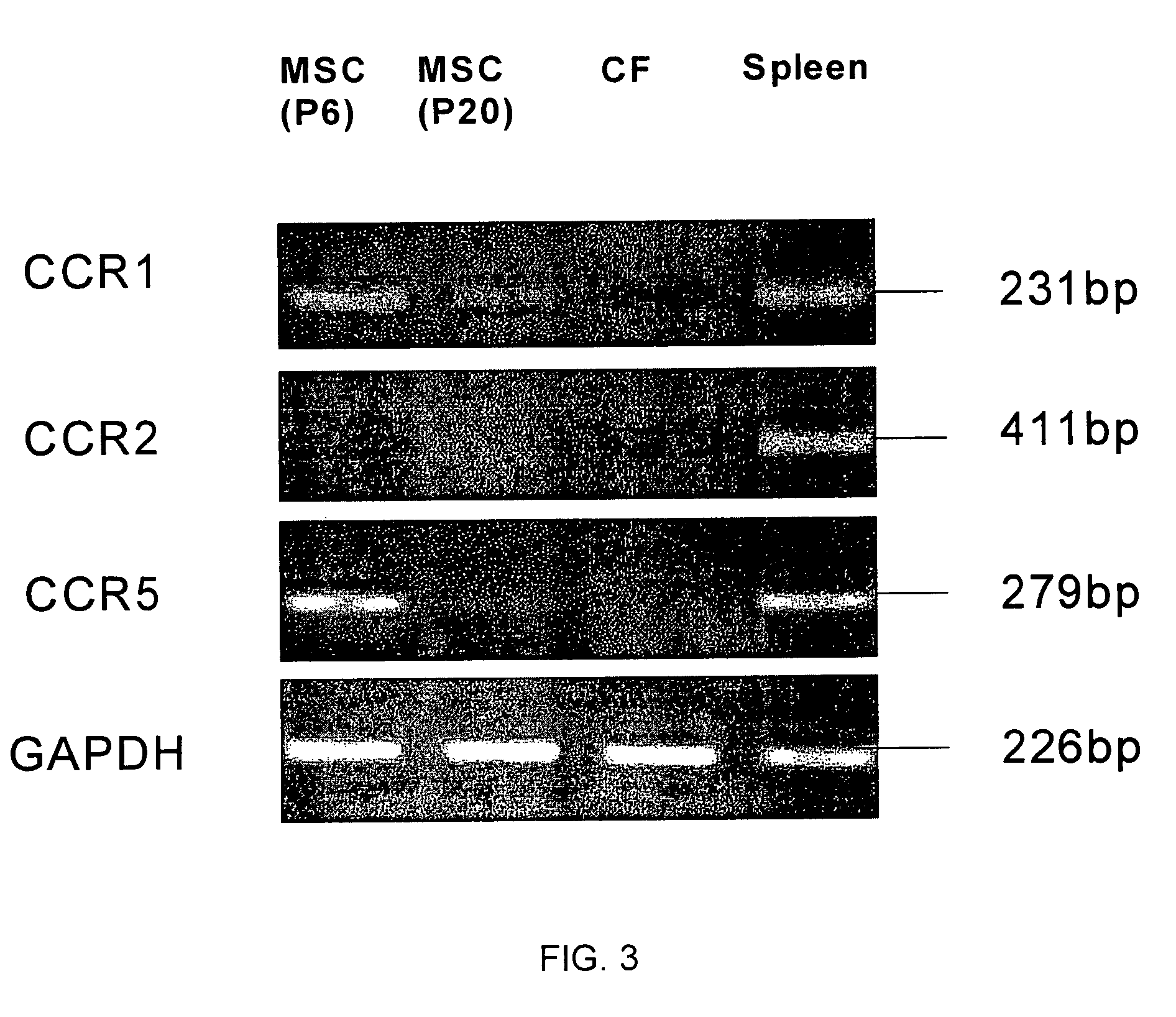CCR ligands for stem cell homing
a stem cell and ligand technology, applied in the field of chemokines, can solve problems such as meaningful recovery of left ventricular function
- Summary
- Abstract
- Description
- Claims
- Application Information
AI Technical Summary
Benefits of technology
Problems solved by technology
Method used
Image
Examples
examples
[0107]The present invention is further illustrated by the following series of examples. The examples are provided for illustration and are not to be construed as limiting the scope or content of the invention in any way.
Introduction
[0108]MSC can differentiate into a number of organ specific cell types as well as modulate local microenvironment of injured tissues and modulate the immune system. Little is known about how stem cells traffic / home to injured tissue. Recently, a sub-population of MSC have been shown to express the SDF-1 chemokine receptor CXCR4, and some studies have suggested that this population, may therefore, home in response to SDF-1 expression. While intriguing, MSC themselves express SDF-1, and there is little precedent in the literature for a cell to migrate in response to a chemokine that they themselves secrete.
[0109]We have demonstrated that there is transient homing of hematopoietic stem cells to the heart following myocardial infarction. The transient nature ...
PUM
| Property | Measurement | Unit |
|---|---|---|
| pH | aaaaa | aaaaa |
| concentration | aaaaa | aaaaa |
| time | aaaaa | aaaaa |
Abstract
Description
Claims
Application Information
 Login to View More
Login to View More - R&D
- Intellectual Property
- Life Sciences
- Materials
- Tech Scout
- Unparalleled Data Quality
- Higher Quality Content
- 60% Fewer Hallucinations
Browse by: Latest US Patents, China's latest patents, Technical Efficacy Thesaurus, Application Domain, Technology Topic, Popular Technical Reports.
© 2025 PatSnap. All rights reserved.Legal|Privacy policy|Modern Slavery Act Transparency Statement|Sitemap|About US| Contact US: help@patsnap.com



